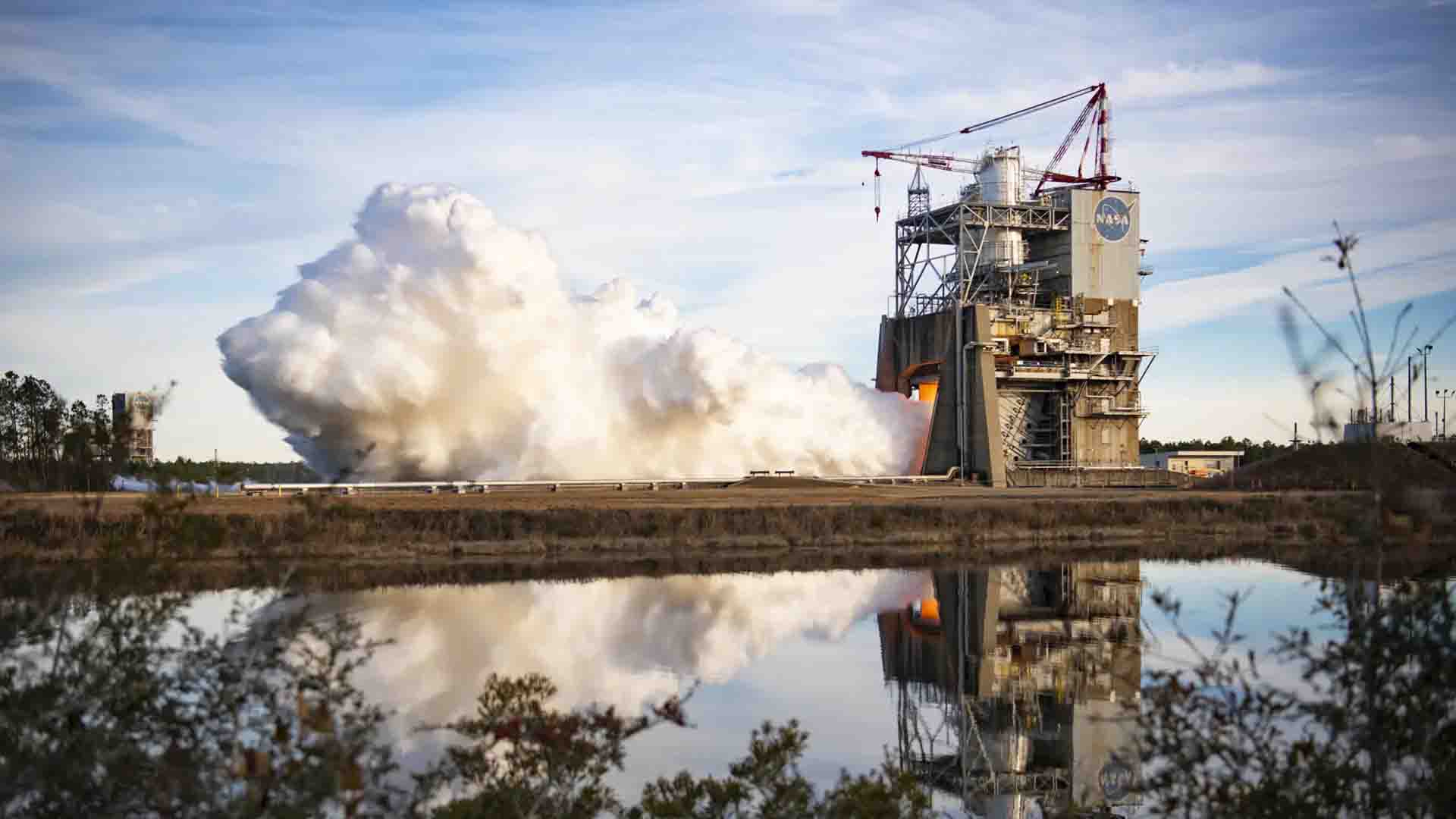Space
NASA conducts RS-25 Artemis Rocket Engine’s 1st full-duration hot fire test

NASA on Wednesday conducted the first full-duration hot fire test of its RS-25 engine developed for the Artemis Moon mission. The test took place at NASA’s Stennis Space Center near Bay St. Louis Mississippi.
The engine is developed contractor by Aerojet Rocketdyne, an L3Harris Technologies company for future flights of NASA’s Space Launch System (SLS) rocket including the Artemis missions.
This engine ignition followed a “test like you fly” approach. It means that the operators fired the engine for the same amount of time almost eight and a half minutes (500 seconds) similar to the launch SLS and at power levels ranging between 80% to 113%.
The hot fire test aimed at evaluating the performance of several new engine components including nozzle hydraulic actuators, flex ducts, and turbopumps.
After three tests in the fall of 2023, operators fired the engine for durations from 500 to 650 seconds. The longest test in the series occurred on November 29 when crews gimbaled or steered the engine for almost 11 minutes (650 seconds) fire.

NASA full-duration 500-second hot fire test of RS-25 engine at NASA’s Stennis Space Center near Bay St. Louis Mississippi
Each SLS flight equips 4 RS-25 engines with a combined thrust of 2 million pounds. The first four Artemis missions with SLS are designed with modified engines that can power up to 109% of their rated level.
Meanwhile, the new RS-25 engines will provide 111% of additional thrust. NASA says, testing to the 113% power level provides an added margin of operational safety.
This hot fire test is the second and final series to certify the production of the upgraded engines. Throughout the past year, NASA completed a 12-test certification series with the upgraded components.
This test campaign is expected to be completed in 2024 and all of the systems will be used for 24 new RS-25 engines, featured for the first time with Artemis V rocket.
(source – NASA)
